Kialo Edu’s mission to make the classroom a more thoughtful place aligns seamlessly with the goals of the International Baccalaureate (IB) ®. For educators with students in the IB Diploma Programme, Kialo is an ideal (and completely free!) teaching tool for guiding students through the extended essay.
Students can use Kialo’s interactive, branching discussion format to help research, plan, and structure their essays, while educators can easily supervise students’ work in an online environment. In this article, we’ll explore the benefits of using Kialo to prepare for the IB extended essay.
What is the IB extended essay?
The 4,000-word IB extended essay is a compulsory part of the IB Diploma Programme, requiring about 40 hours of independent study. Students must develop a research question related to a topic of special interest and conduct an in-depth analysis.
The extended essay requires students to take ownership of their workload and drive their own inquiry. This builds students’ critical thinking and self-management skills, preparing them for future undergraduate research.
How to pick a good IB extended essay topic?
Selecting the right topic helps students engage fully in the writing process for creating an original and comprehensive extended essay. Use the tips below to guide your students in making a strong choice.
1. Allow students to choose topics that interest them.
Topics should draw on students’ IB subject knowledge, but should also be relatable enough to draw on their individual strengths, experiences, and passions. This helps boost students’ engagement with the essay, while their personal insights will add authenticity to their arguments.
2. Guide students to select a topic with clear opposing viewpoints.
If viewpoints on a topic are already universally accepted, their extended essay may lack depth and purpose.
3. Give students time to conduct preliminary research.
This helps students decide if there is enough scope for their extended essay before they finalize their research question.
4. Encourage students to find a unique perspective on the topic.
This helps students develop original ideas, setting their work apart from others and making the research process more interesting.
5. Help students choose strong IB extended essay topics with debate topics from Kialo Edu’s Topic Library.
Our Topic Library is bursting with hundreds of relevant, engaging (and free!) discussion questions, from Artifical Intelligence to World War II, that students can tailor to suit their extended essays.
How students can plan their IB extended essay on Kialo Edu
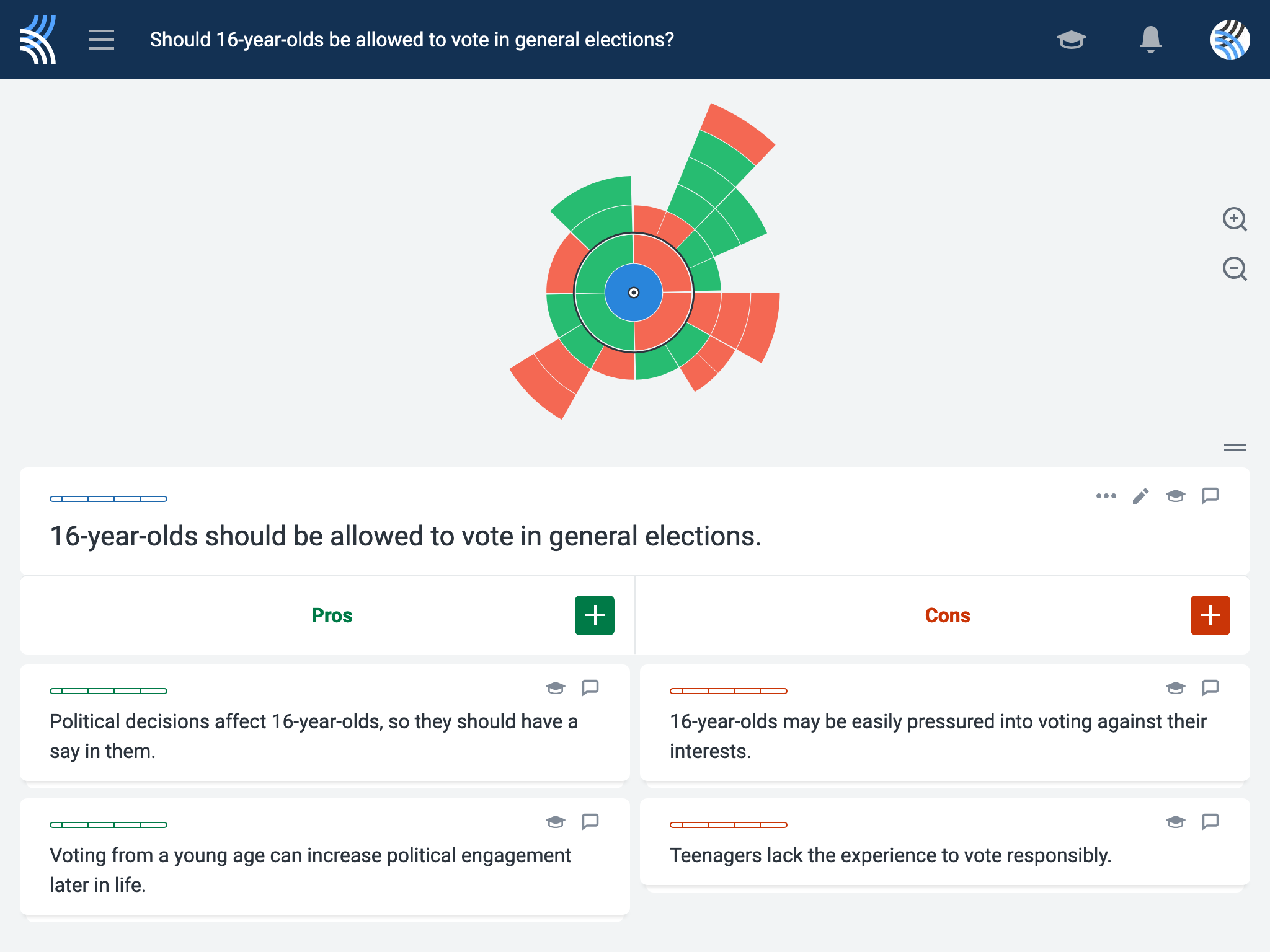
Students can use a Kialo discussion to independently plan and structure their extended essays. First, students should add a thesis statement based on their research question. Then, they can write pro and con claims to develop lines of reasoning that act as supporting arguments while addressing counter arguments.
Let’s take a closer look at how each section in an extended essay corresponds to parts of a Kialo discussion.
1. Extended essay: Introduction
Kialo discussion: Thesis and Background Information
Students begin by adding a thesis — a concise statement that articulates the main argument of the extended essay.

They can also provide context in the Background Information to give an overview or abstract of their essay.

2. Extended essay: Body paragraphs
Kialo discussion: Pro and con claims
Students use Kialo’s branching discussion framework to present the main arguments in support of their thesis. The visual discussion format reduces the cognitive load for students, freeing them up to concentrate on structuring their essay.
Students begin each branch with a top-level pro claim — the equivalent of a topic sentence — and then support this with further pro claims. The branching structure encourages students to make one claim at a time, directly addressing the previous point.
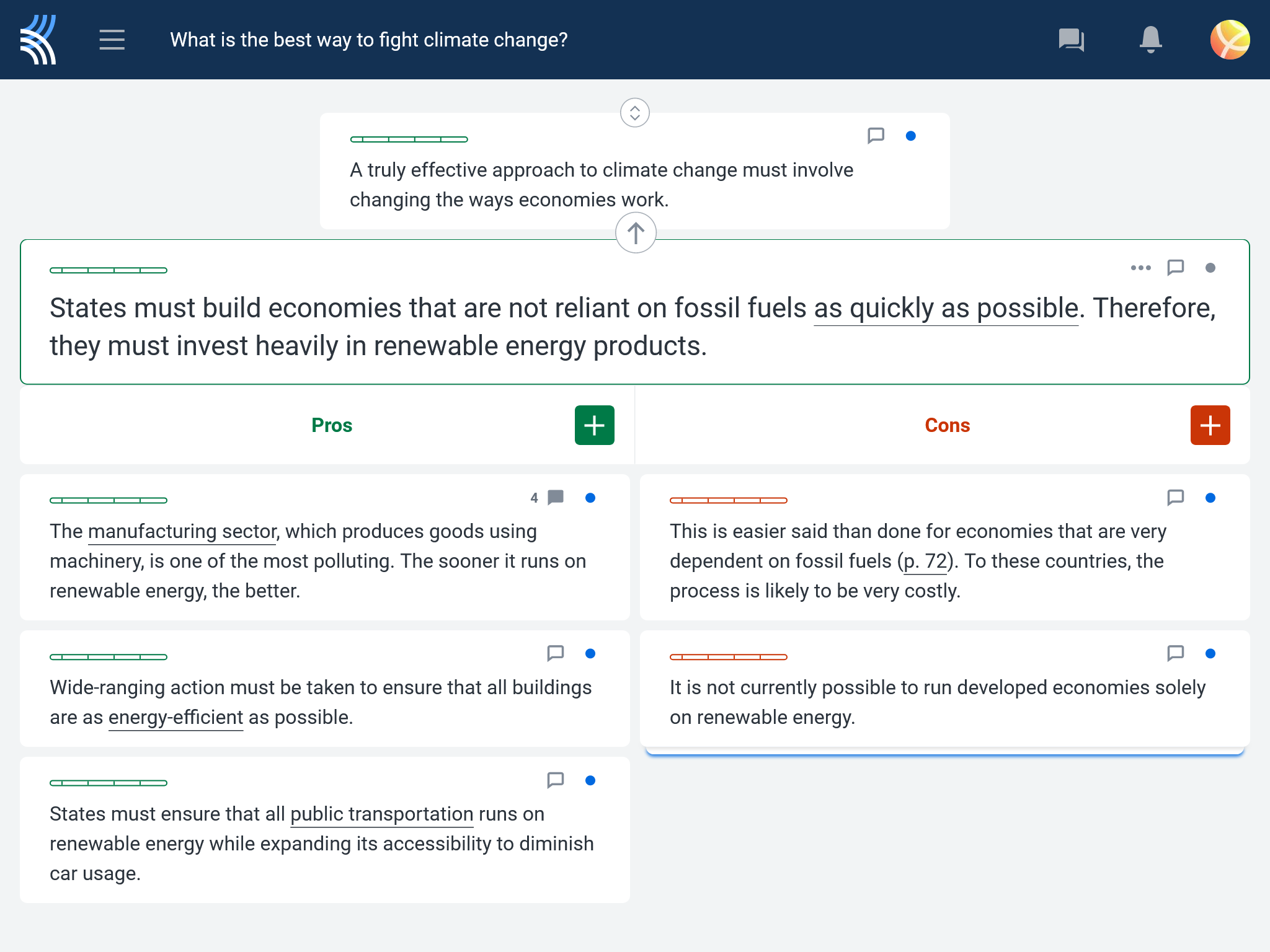
Students can also address counterarguments by adding con claims to this top-level pro claim. This helps prompt students to add counterarguments, as well as rebuttals to these counterarguments to further strengthen their main argument.
For those students who tend to overlook opposing perspectives, they can easily see both the supporting and opposing viewpoints that appear side by side in a Kialo discussion.
3. Extended essay: Conclusion
Kialo discussion: Argument tree or “sunburst” mini-maps
Students can view their Kialo discussion either as an argument tree or as a “sunburst” mini-map. This displays an overview of each part of the discussion, showing arguments as color-coded pros and cons.
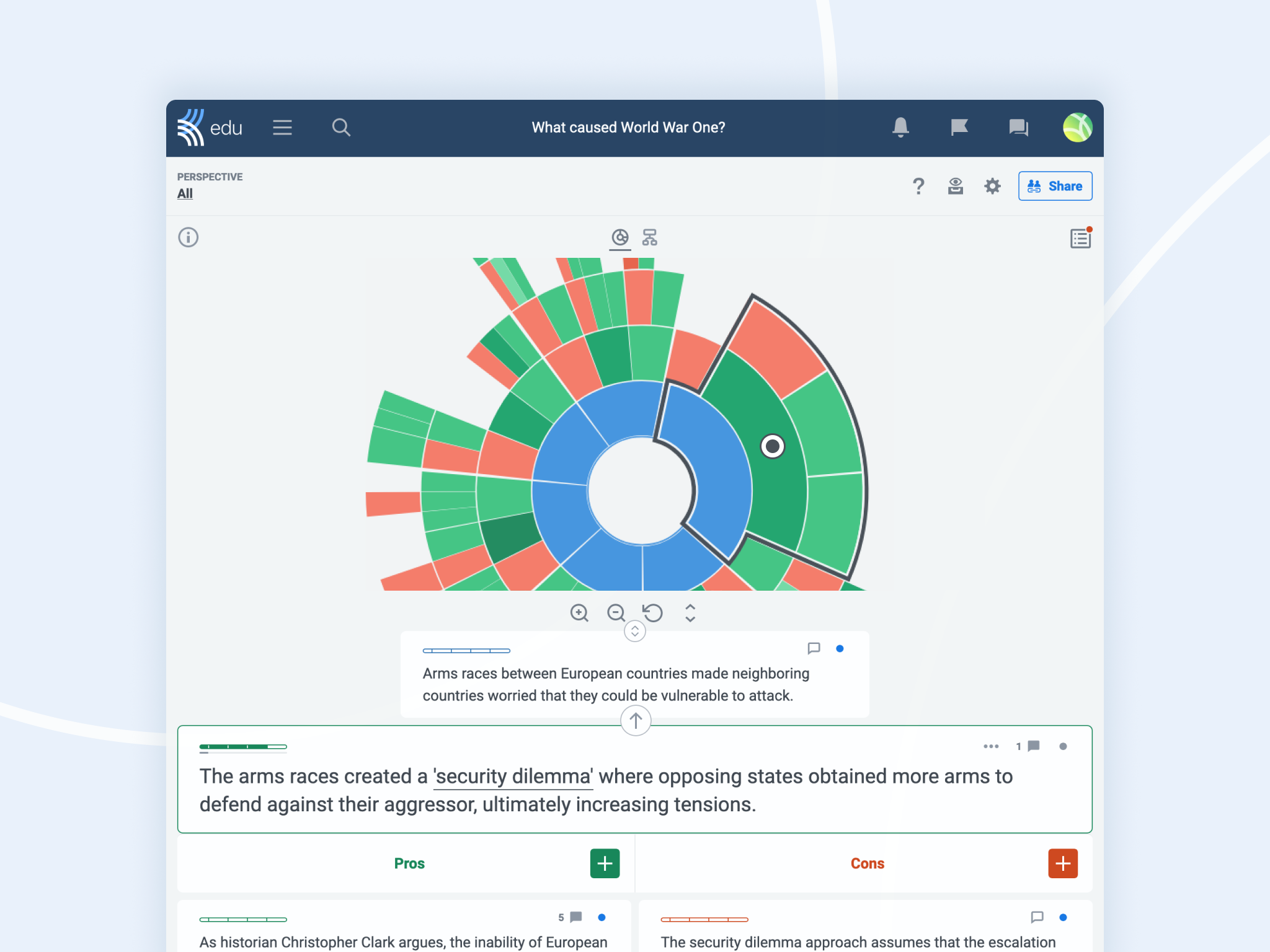
The mini-map helps students identify any content gaps or get the gist of the whole discussion. They can use this to further develop each argumentation branch to draw well-reasoned conclusions.
4. Extended essay: References or bibliography
Throughout the discussion, students can strengthen claims by adding links to supporting evidence, including statistics, expert opinions, and real-world examples. This boosts the credibility of their claims and enables readers to verify the information.
Once students complete their argument, they’ll find all their sources compiled in the Sources sidebar, ready for reference when drafting their extended essay.
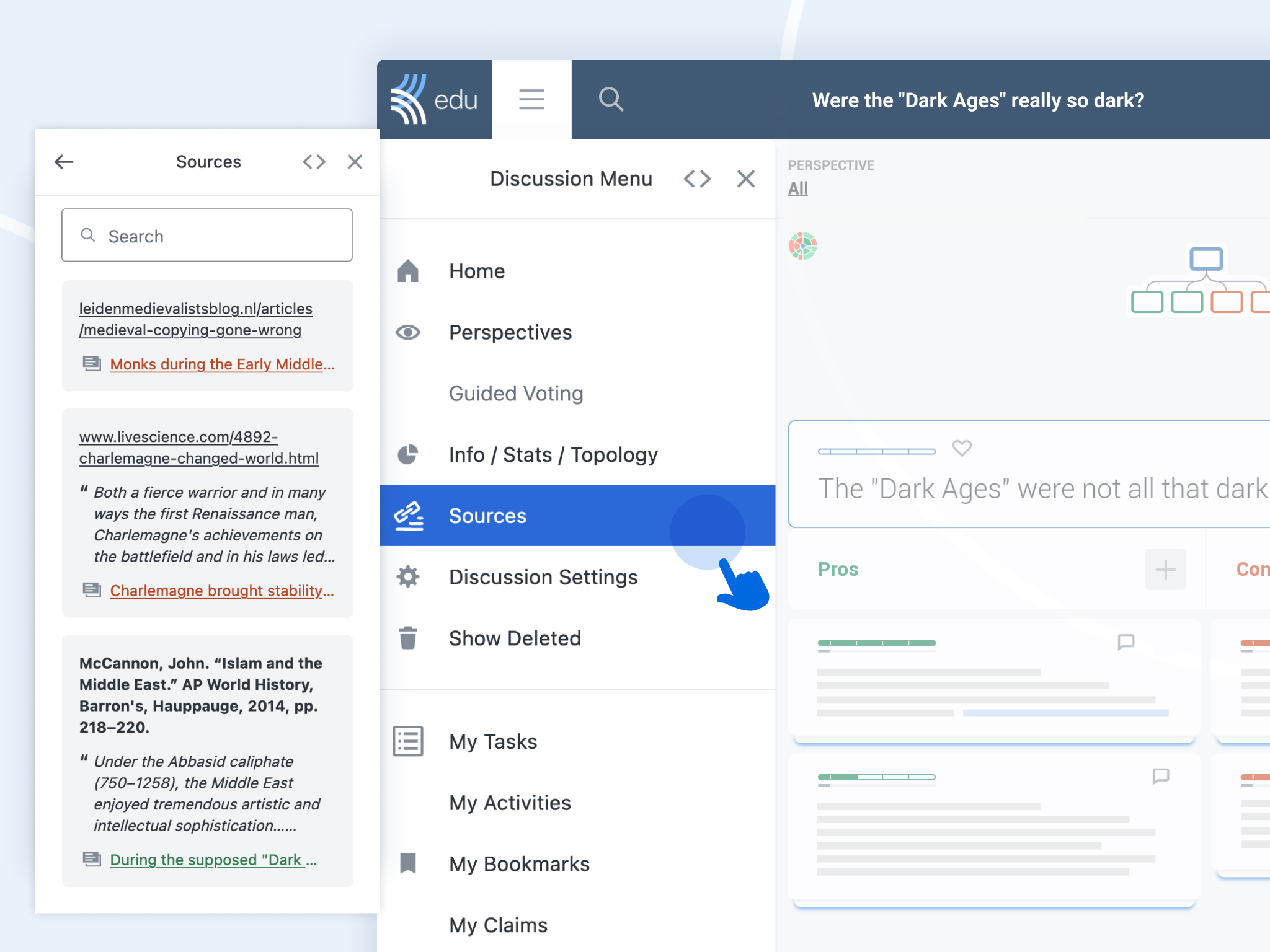
How to guide students’ written reflections on their IB extended essay using Kialo Edu
Students must submit three written reflections on the extended essay process as part of their overall assignment. Kialo can streamline this process for both students and their extended essay supervisors.
As students add claims to the discussion, they can leave comments on these claims to reflect on their research journey. Students can use this as an ongoing bank of evidence for their written reflections, while supervisors can use it to inform their assessment comments.
Supervisors can guide students by responding to their comments or using the Grading tool to provide constructive feedback. They can also use students’ reflections to focus review meetings.
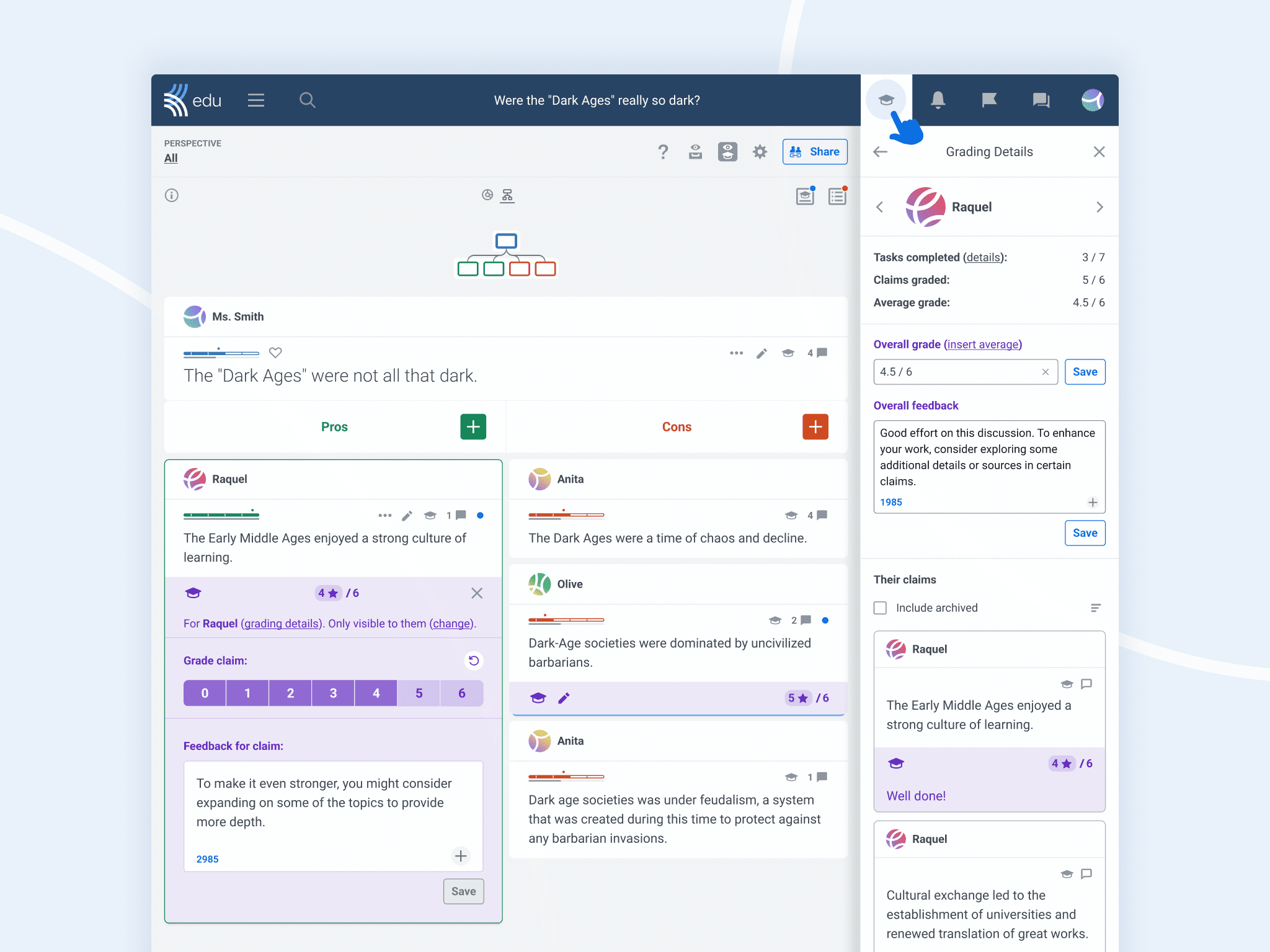
Whether it’s helping students select a topic, structure their extended essay, or conduct written reflections, Kialo Edu’s free written discussion format can empower your IB students to succeed in their extended essays.
It’s easy to get started: You can use Kialo with your favorite LMSs, easily integrating it as an activity within a module. Then, students simply need to create a discussion to start planning their extended essays!
Have you discovered one of the many ways that Kialo supports IB students? We’d love to hear from you! Contact us at feedback@kialo-edu.com or on social media.

